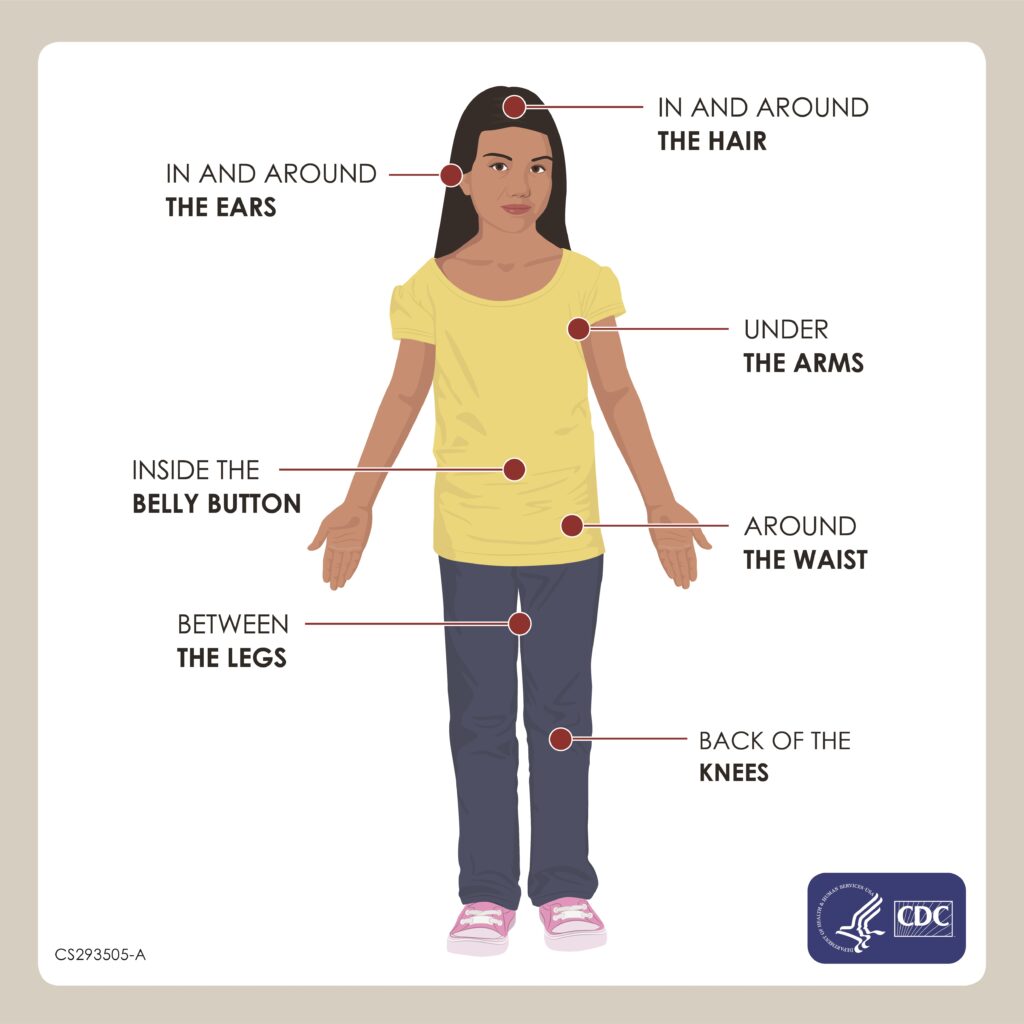Ticks do not jump or fly but instead wait for hosts on the tips of long grasses and shrubs. Ticks attach to your clothes, shoes and skin when you walk by them. To avoid these waiting ticks, make sure you and your child practice tick bite prevention before, during and after being outdoors.
When choosing an insect repellent to protect your family against tick bites, stick with primary active ingredients registered by the EPA. Concentration means the amount of active ingredient in a repellent product—higher concentrations work longer, not better.
Primary active ingredients for insect repellents registered by the EPA are:
Remember: children should not apply repellent to themselves or others until they can read, understand and follow label directions. Apply a light layer only to exposed skin or clothing when applying insect repellent. Use your hands to apply insect repellent on your child’s face. Do not apply insect repellent on skin covered by clothing. After returning inside, wash any skin treated with insect repellent with soap and water.
Adult blacklegged ticks are about the size of a sesame seed, while nymphal ticks are about the size of a poppy seed. Check all parts of the body, with careful inspection of the hair, ears, arms, belly button, waist, legs and knees for ticks when you come in from the outdoors.

Visit our FAQ to explore more questions health care providers are commonly asked.